Jigme Singye Wangchuck National Park, located in the heart of Bhutan, is a vast and biodiverse sanctuary that showcases the country’s commitment to conservation and environmental sustainability. Named after the fourth King of Bhutan, this park is one of the largest protected areas in the country, covering over 1,730 square kilometres. Established in 1995, the park is an essential part of the Bhutanese landscape, both culturally and ecologically. The park’s pristine forests, rivers, and mountainous terrains are home to an array of wildlife, including some endangered species, making it a must-visit for nature lovers and adventure seekers alike.
Jigme Singye Wangchuck National Park Location
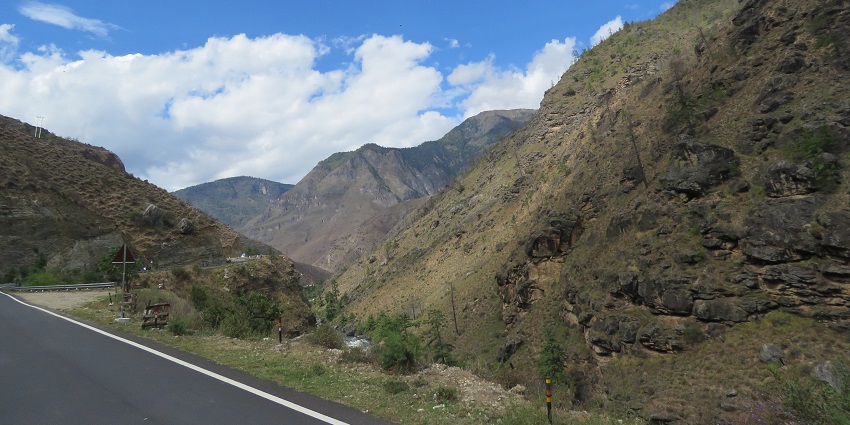
Photo: Vinayaraj / Wikimedia Commons
Jigme Singye Wangchuck National Park is situated in central Bhutan, encompassing parts of the Trongsa, Sarpang, Wangdue Phodrang, Tsirang, and Zhemgang districts. The diverse topography of the park ranges from subtropical forests at low altitudes to alpine meadows in high-elevation regions.
Suggested Read: A Guide To Airports In Bhutan
How To Reach Jigme Singye Wangchuck National Park
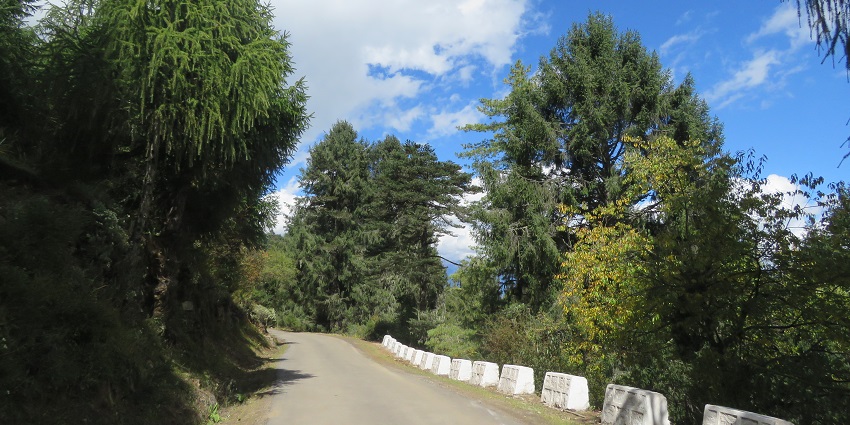
Photo: Vinayaraj / Wikimedia Commons
Reaching Jigme Singye Wangchuck National Park requires careful planning for the most convenient routes.
By Air: The nearest international airport is Paro, which is well-connected to several major cities in India, such as Kathmandu. From Paro, visitors can hire a private vehicle or take a domestic flight to Bumthang, followed by a drive to Trongsa, one of the entry points to the park.
By Road: For those already in Bhutan, the park can be accessed by road from Thimphu, the capital, or from other major towns like Punakha and Wangdue Phodrang. The roads, though scenic, can be challenging, especially during the monsoon season, so it is advisable to travel with a knowledgeable local driver.
By Trekking: Several trekking routes lead into and through the park, offering an immersive experience of Bhutan’s wilderness. Popular routes include the Nabji Trail and the Black Mountain Trek, both of which offer stunning views and the chance to encounter local wildlife.
Places To Visit Around Jigme Singye Wangchuck National Park
While the park itself is the main attraction, there are several notable sites and experiences in and around Jigme Singye Wangchuck National Park that enhance the visit. Here are the best places to visit near the Jigme Singye Wangchuck National Park.
1. Nabji Village
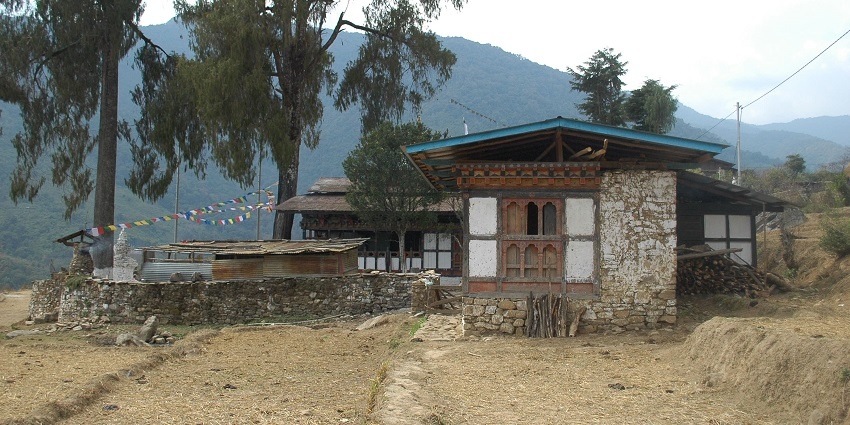
Photo: Phuentsho / Wikimedia Commons
Nabji Village, located within the park, is a small, picturesque settlement that offers a glimpse into traditional Bhutanese rural life. The village is a key point on the Nabji Trail, a popular trekking route that passes through lush forests and crosses numerous rivers. Nabji is also home to the Nabji Lhakhang, a sacred temple believed to have been established by Guru Rinpoche, the revered Buddhist saint. Visitors can experience the warm hospitality of the local Monpa people, who are known for their unique culture and close relationship with nature.
Timings: Open year-round
Entry Fee: Free to visit; guided treks can be arranged through local tour operators.
Suggested Read: Phobjikha Valley In Bhutan
2. Phobjikha Valley
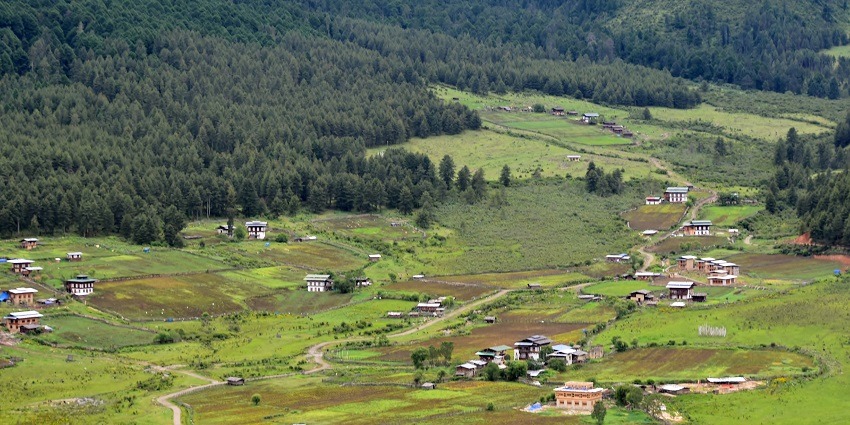
Photo: Prof. Mortel / Wikimedia Commons
Phobjikha Valley, though slightly outside the park’s boundaries, is a stunning glacial valley known for its scenic beauty and as a winter roosting ground for the endangered Black-necked Cranes. The valley is surrounded by dense pine forests and dotted with traditional farmhouses, creating a serene and idyllic landscape. The Gangtey Monastery, perched on a hill overlooking the valley, is one of Bhutan’s most important religious sites and offers spectacular views of the surrounding area. Visiting Phobjikha provides a perfect combination of nature, wildlife, and spirituality.
Timings: Open year-round
Entry Fee: Free to visit; a small donation is encouraged at Gangtey Monastery.
3. Trongsa Dzong
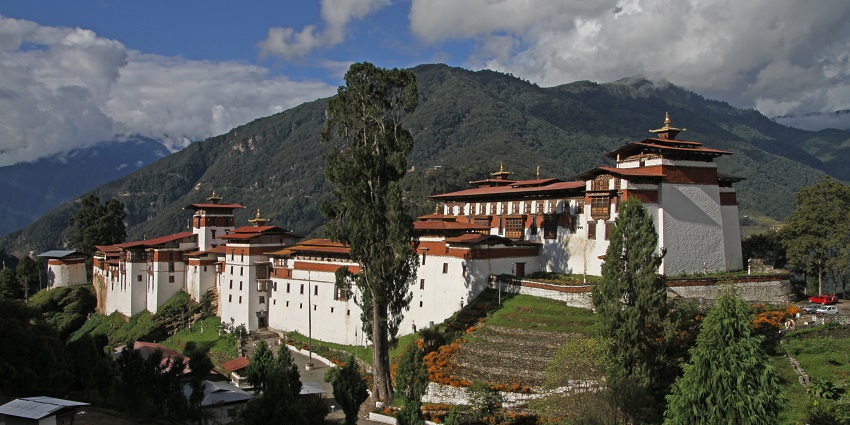
Photo: Gerd Eichmann / Wikimedia Commons
Trongsa Dzong, located in the town of Trongsa, is one of the most impressive and historically significant fortresses in Bhutan. Built in the 16th century, it has played a crucial role in the country’s history as the seat of power for Bhutan’s royal family. The dzong’s strategic location on a ridge overlooking the Mangde River provides breathtaking views of the surrounding valleys and mountains. Inside, visitors can explore its many temples, courtyards, and towers, gaining insight into Bhutan’s rich cultural heritage.
Timings: Open daily from 9 AM – 5 PM
Entry Fee: A small fee may apply for non-Bhutanese visitors.
Suggested Read: Bhutan Picnic Places For An Unforgettable Vacation
4. Pele La Pass
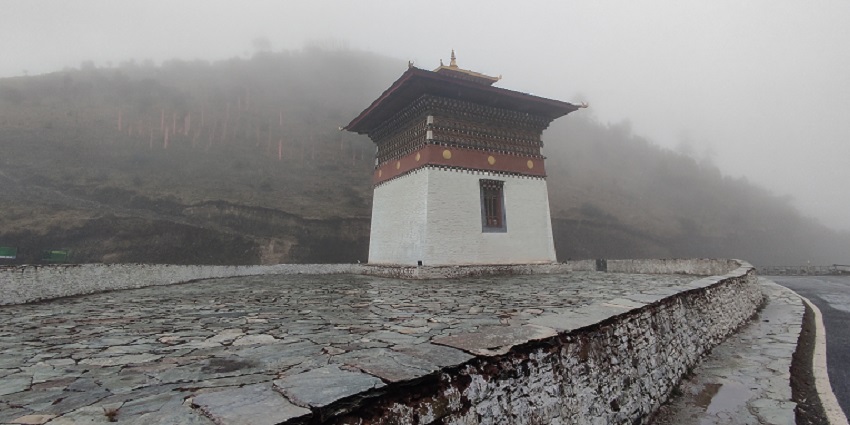
Photo: RPSkokie / Wikimedia Commons
Pele La Pass is a high mountain pass that connects the districts of Wangdue Phodrang and Trongsa. At an altitude of 3,420 metres, it offers panoramic views of the Black Mountain range, which forms a natural border between western and central Bhutan. The pass is adorned with colourful prayer flags and is a popular stop for travellers seeking to capture the stunning landscapes of the Himalayas. The area around Pele La is also rich in birdlife, making it a great spot for birdwatching enthusiasts.
Timings: Open year-round
Entry Fee: Free to visit
5. Zhemgang Dzong
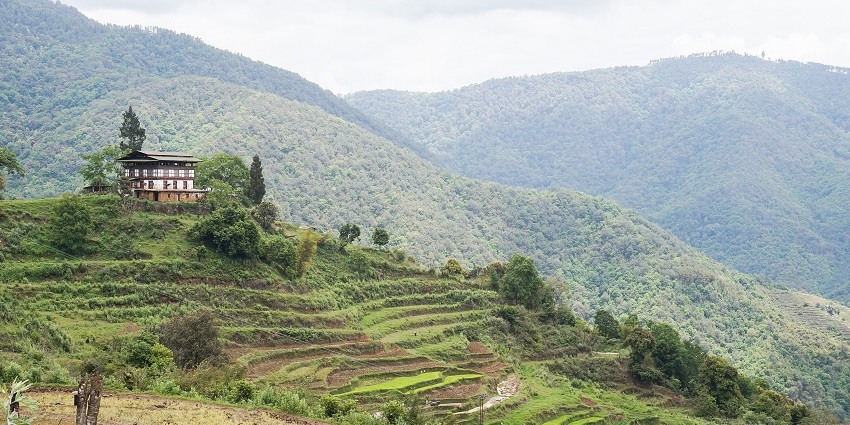
Photo: Bernard Gagnon / Wikimedia Commons
Zhemgang Dzong, located in the Zhemgang district, is a lesser-known but equally fascinating fortress compared to other dzongs in Bhutan. The dzong is perched on a ridge with commanding views of the surrounding valleys and forests. Zhemgang Dzong is particularly interesting for its blend of traditional Bhutanese architecture and the tranquillity of its remote location. The surrounding area is also known for its rich biodiversity, including sightings of golden langurs and other rare wildlife. It is one of the best places to visit near Jigme Singye Wangchuck National Park when planning a trip to Bhutan.
Timings: Open daily
Entry Fee: Free to visit
Suggested Read: Exploring Karbandi Monastery
Where To Stay
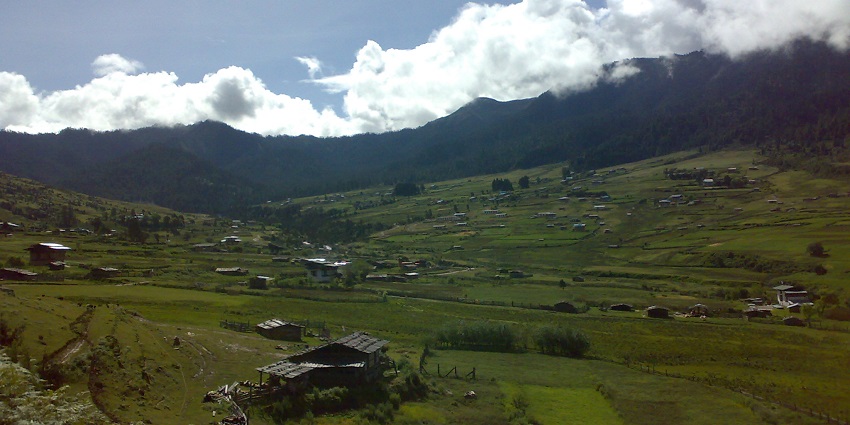
Photo: Phuentsho / Wikimedia Commons
Accommodation options around Jigme Singye Wangchuck National Park cater to a range of preferences and budgets. The Yangkhil Resort in Trongsa blends modern amenities with traditional Bhutanese architecture, offering a comfortable stay near Trongsa Dzong. For a more authentic experience, Phobjikha Valley Homestays provide a chance to stay with local families and enjoy home-cooked meals. Zhemgang Guesthouses, though basic, offers cosy accommodations for travellers exploring Zhemgang’s remote areas. Additionally, trekking camps are available along the main trails for those who prefer a practical and adventurous stay while exploring the park.
Where To Eat
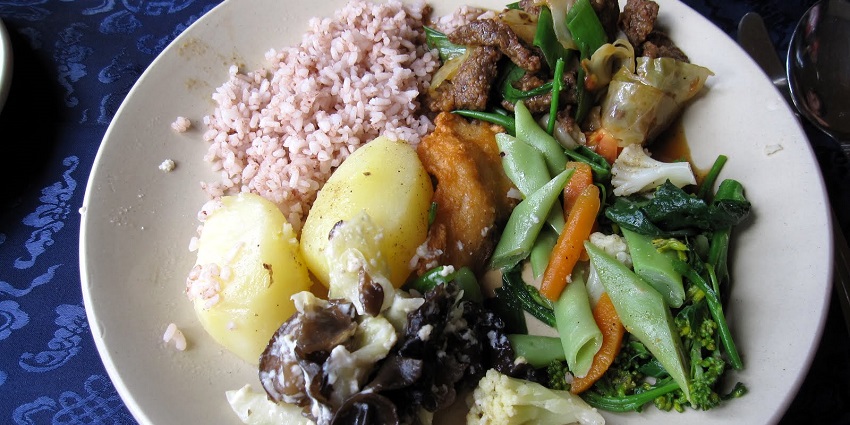
Photo: rapidtravelchai / Wikimedia Commons
Dining options near Jigme Singye Wangchuck National Park offer a taste of traditional Bhutanese cuisine. Yangkha Restaurant in Trongsa serves hearty Bhutanese meals, including the national dish Ema Datshi (chillies and cheese), along with a variety of rice and curry dishes.
Gangtey Lodge in Phobjikha provides a more upscale dining experience, featuring local ingredients and traditional dishes with a modern twist.
Suggested Read: Exploring Taktsang Monastery
Best Time To Visit
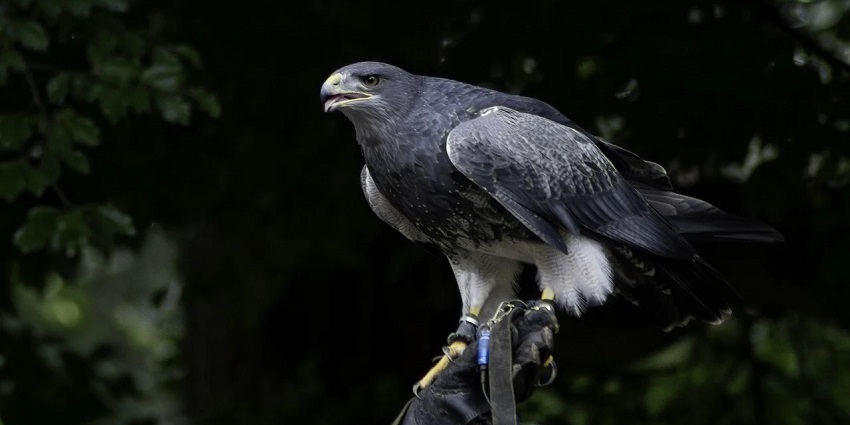
Photo: Indian-spirits / Pixabay / Image For Representation Only
The best time to visit Jigme Singye Wangchuck National Park is during the spring (March to May) and autumn (September to November) seasons when the weather is mild and the skies are clear. These periods are ideal for trekking, wildlife spotting, and enjoying the stunning landscapes.
The monsoon season (June to August) brings heavy rainfall, making some trails difficult to navigate, while winter (December to February) can be cold, especially at higher altitudes, but offers a quieter, more serene experience.
Other Factors To Consider
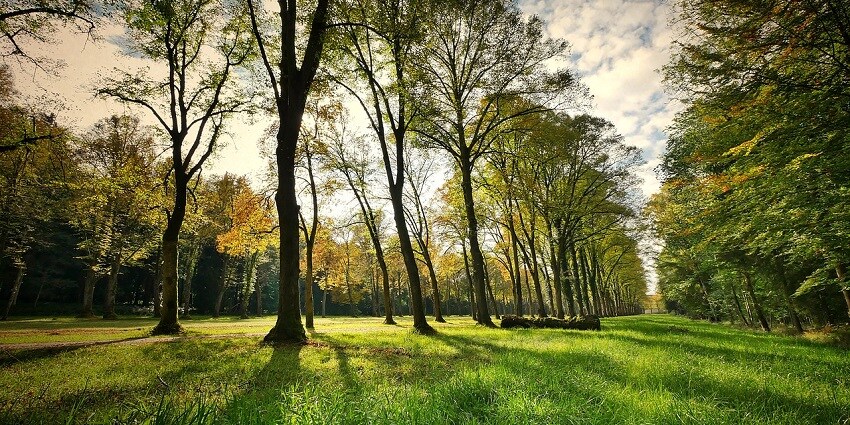
Cost Of The Trip:
The cost of visiting Jigme Singye Wangchuck National Park varies based on your travel style. The entry fee for Jigme Singye Wangchuck National Park is only $1.79 (₹ 150). Budget travellers can expect to spend around $50-70 (₹4,000-5,800) per day, covering basic accommodation, meals, and transportation.
Mid-range travellers might budget $100-150 (₹8,300-12,500) per day, including better accommodation and guided tours. Luxury travellers could spend upwards of $200 (₹16,700) per day, enjoying the best available amenities and services.
Tips For Travellers:
- Ensure you have the necessary permits for entering the park and trekking.
- Carry sufficient cash, as ATMs are scarce in remote areas.
- Dress in layers, as temperatures can vary significantly throughout the day.
- Respect local customs and traditions, especially when visiting religious sites.
- Consider hiring a guide for a more in-depth experience of the park’s natural and cultural heritage.
- Kindly ask the faculty when clicking photos of Jigme Singye Wangchuck National Park.
Suggested Read: Exploring The Temples In Bhutan Among Its Scenic Vistas
Explore the diverse landscapes, rich wildlife, and serene beauty of Bhutan’s Jigme Singye Wangchuck National Park. Whether you’re seeking thrilling trekking adventures, immersive cultural experiences, or peaceful retreats in nature, this is the perfect destination for you. Ready to experience Bhutan’s natural paradise? Book your trip now and embark on an unforgettable journey into the heart of Jigme Singye Wangchuck National Park!
Cover Photo: congerdesign / Pixabay / Image For Representation Only


 WhatsApp
WhatsApp
 Twitter
Twitter









